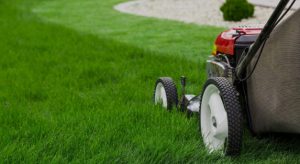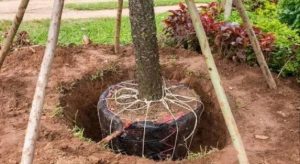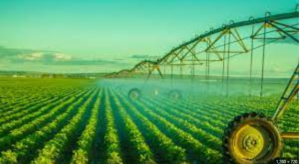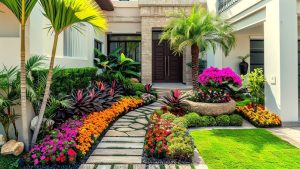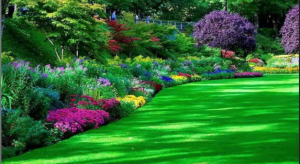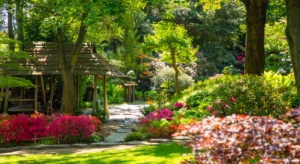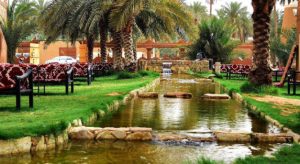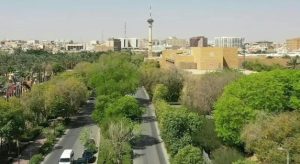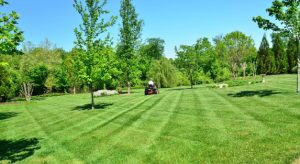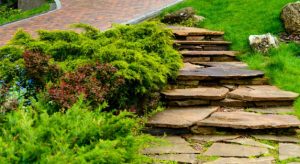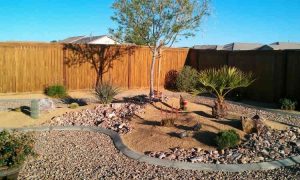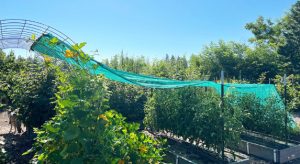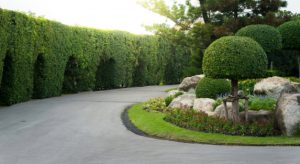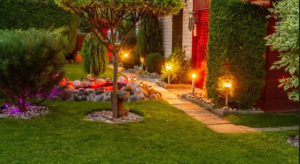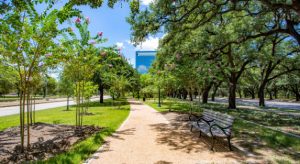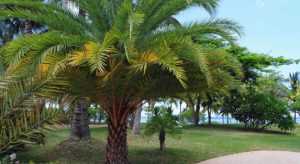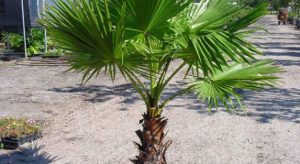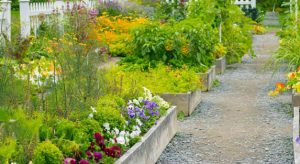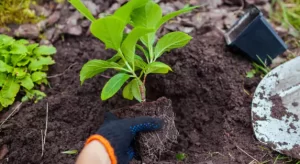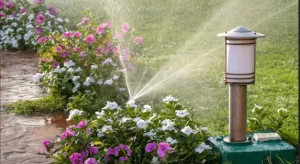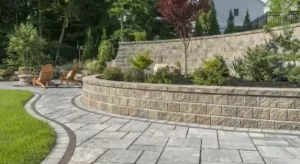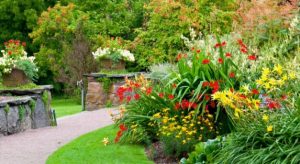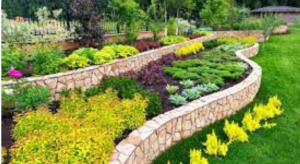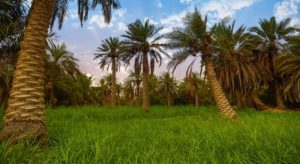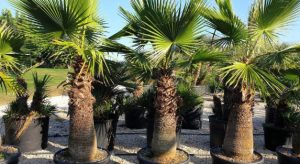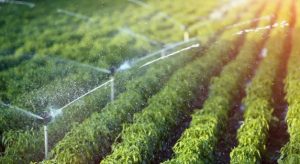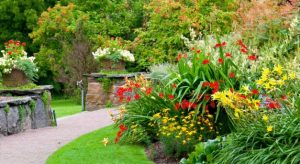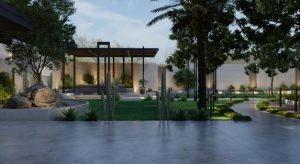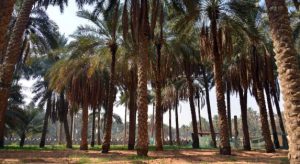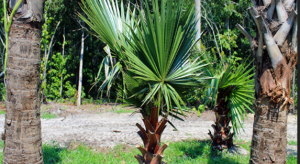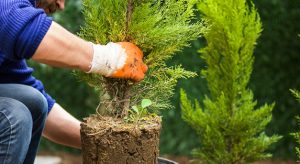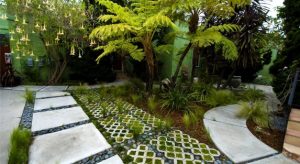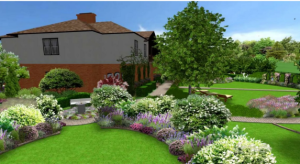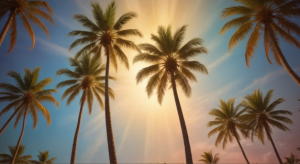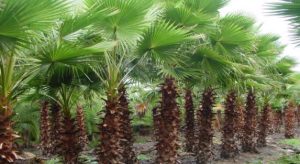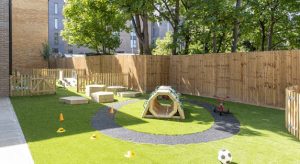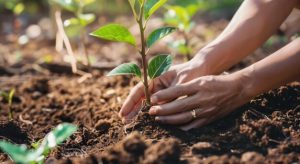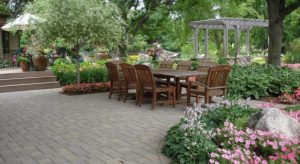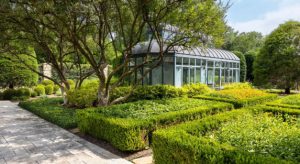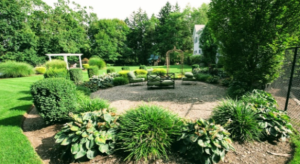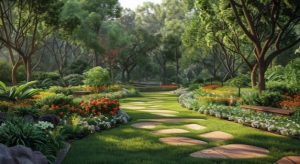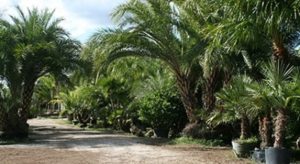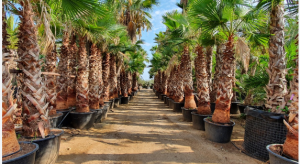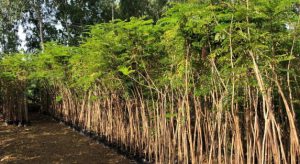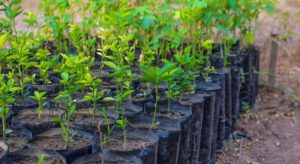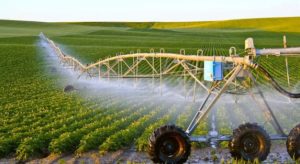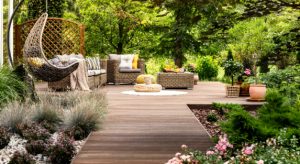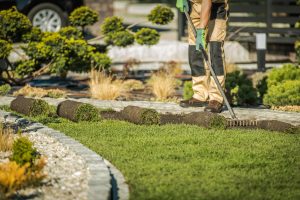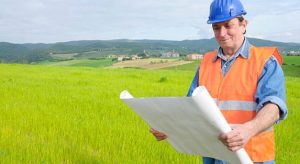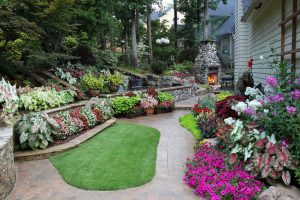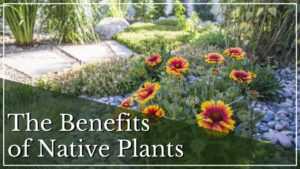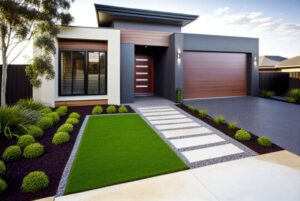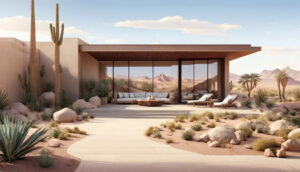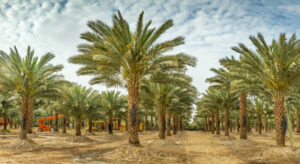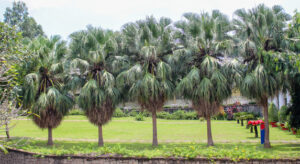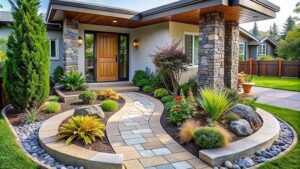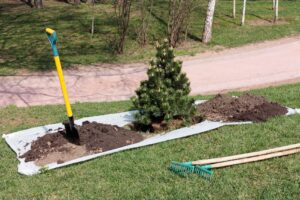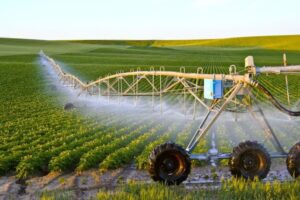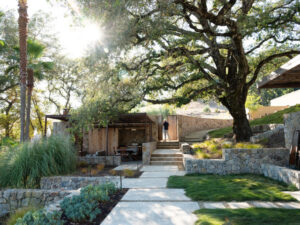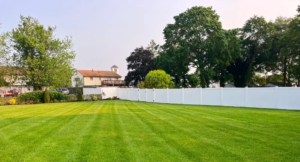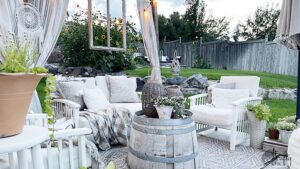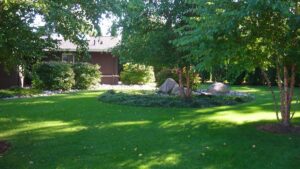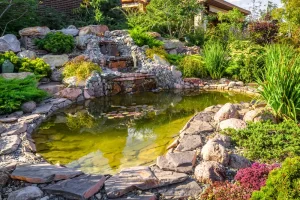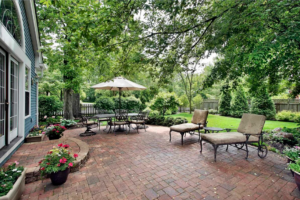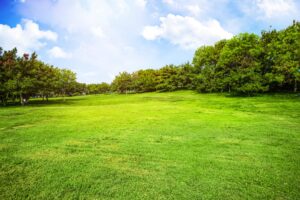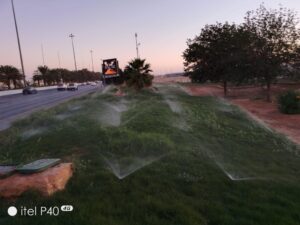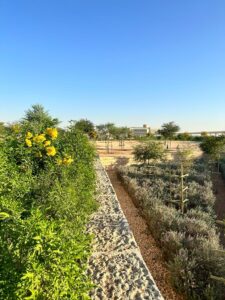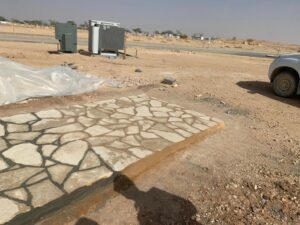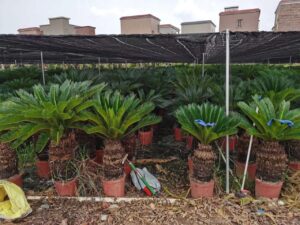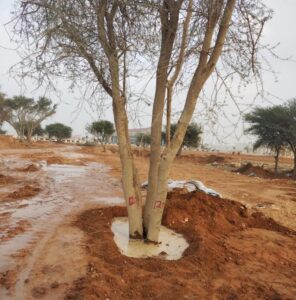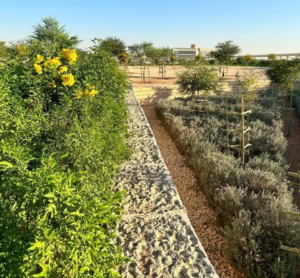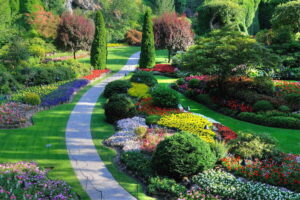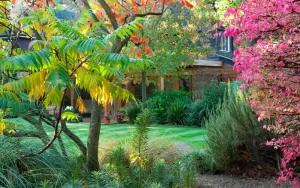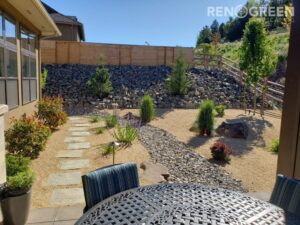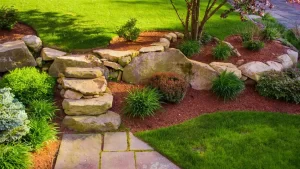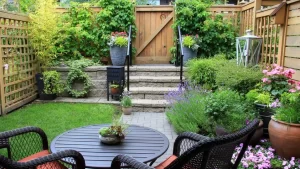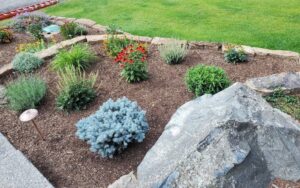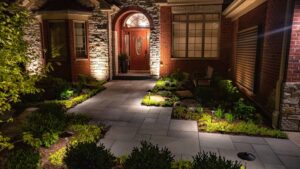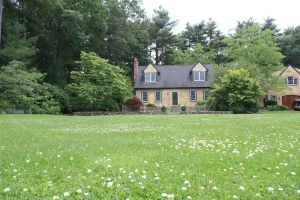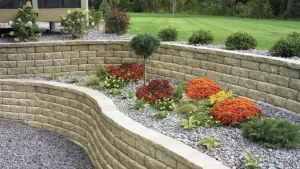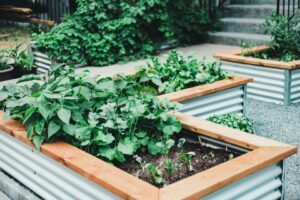How to Design a Beautiful Landscape Garden
26 March, 2025
Introduction:
Landscape gardening goes beyond simply planting trees and arranging flowers—it’s about crafting a visually appealing, functional, and sustainable outdoor space. A well-designed garden enhances property value, provides a relaxing environment, and promotes ecological balance. However, in Saudi Arabia’s extreme climate, successful landscaping requires strategic planning, careful plant selection, and efficient irrigation methods.
As a leading landscaping company in Saudi Arabia, we specialize in transforming barren landscapes into lush, green havens. Our expertise lies in selecting drought-resistant plants, designing effective irrigation systems, and incorporating aesthetic and functional elements to create gardens that thrive despite the arid conditions.
This comprehensive guide covers every aspect of landscape design, from initial planning and layout to plant selection, hardscaping, and long-term maintenance. Whether you are a homeowner looking to enhance your backyard, a business owner seeking to improve your commercial property's appeal, or a municipal planner developing public green spaces, this article offers valuable insights.
By following expert tips and sustainable landscaping practices, you can create a breathtaking garden that not only withstands Saudi Arabia’s challenging climate but also adds beauty, comfort, and functionality to your space. Let’s explore how to design the perfect landscape garden!
1: Understanding the Basics of Landscape Design
1.1 What is Landscape Gardening?
Landscape gardening is the art and science of transforming outdoor spaces into aesthetically pleasing, functional, and sustainable environments. It involves a strategic combination of natural and man-made elements to create a harmonious balance between beauty and practicality. Whether for residential, commercial, or public spaces, a well-designed landscape enhances the overall ambiance while contributing to environmental well-being.
Key components of landscape gardening include:
- Softscaping: This refers to all living elements in a garden, such as trees, shrubs, flowers, grass, and ground cover. Carefully selected plants can enhance biodiversity, provide shade, and improve air quality.
- Hardscaping: Non-living features like pathways, patios, retaining walls, pergolas, and decorative stones fall under this category. Hardscaping provides structure, improves accessibility, and adds character to the landscape.
- Water Features: Elements like fountains, ponds, waterfalls, and irrigation systems introduce movement and tranquility while helping maintain humidity levels in arid climates like Saudi Arabia.
- Lighting: Outdoor lighting not only enhances safety and security but also creates a dramatic ambiance after sunset. Well-placed LED or solar lights highlight key landscape features and extend the usability of outdoor spaces.
Beyond aesthetics, landscape gardening plays a crucial role in enhancing environmental sustainability. It helps reduce urban heat islands, promotes natural cooling, and improves air quality. Additionally, a well-maintained landscape significantly boosts property value, making it a worthwhile investment for homeowners and businesses alike.
Understanding these fundamental elements is the first step toward designing a breathtaking landscape that thrives in Saudi Arabia’s unique climate conditions.
1.2 Importance of Hiring a Professional Landscaping Company in Saudi Arabia
Saudi Arabia's harsh climate—marked by scorching summers, limited rainfall, and high evaporation rates—poses significant challenges for anyone attempting DIY landscaping. While it may seem like a cost-effective option, landscaping in such an extreme environment requires a specialized approach to ensure long-term sustainability and aesthetic appeal. This is where hiring a professional landscaping company in Saudi Arabia becomes invaluable.
A professional landscaping company brings a wealth of expertise in designing climate-adaptive landscapes. They are skilled at selecting drought-resistant plants that thrive in the hot, arid conditions of Saudi Arabia. By carefully choosing the right plants, experts can ensure that your garden remains lush and vibrant even with minimal water usage.
In addition to plant selection, a professional landscaping team excels in efficient irrigation. Water conservation is critical in Saudi Arabia, and experienced landscapers use smart irrigation techniques, such as drip systems and rainwater harvesting, to minimize water wastage. This not only saves resources but also helps lower water bills in the long run.
Professional landscapers also bring a deep understanding of cultural sensitivity. In Saudi Arabia, traditional garden styles—such as Islamic gardens, with their emphasis on symmetry, water features, and shaded areas—are highly valued. A skilled landscaping company can seamlessly blend modern design trends with these cultural elements, ensuring that the landscape aligns with local aesthetics and values.
Lastly, landscaping companies are well-versed in regulatory compliance. They understand local municipal laws and zoning regulations, ensuring your garden design adheres to all necessary guidelines. This can save you time, money, and potential legal headaches.
Ultimately, hiring a professional landscaping company ensures that your garden is not only beautiful and functional but also sustainable, cost-effective, and culturally appropriate.
1.3 Key Principles of Landscape Design
Creating a beautiful and functional landscape requires a thoughtful approach to design. By following a few key principles, you can achieve balance, harmony, and visual interest in your outdoor space. Here are the core principles of landscape design:
- Balance:
Balance in landscape design can be achieved through two primary approaches: - Symmetrical Balance: This involves creating mirror-image designs, often found in formal gardens. It gives a sense of order and predictability, making the garden feel structured and organized.
- Asymmetrical Balance: In contrast, asymmetrical balance uses informal layouts with varied elements. It feels more natural and dynamic, often resulting in a relaxed yet visually appealing space.
- Unity & Harmony:
Unity and harmony are about creating a cohesive, well-integrated design. To achieve this, use repeating colors, textures, and plant species throughout the garden. These repetitions create a sense of continuity and connection. Additionally, the garden’s style should complement the architecture of the building or home. This creates a unified look that ties everything together seamlessly. - Focal Points:
A focal point is an element that draws attention and guides the viewer’s eye. Examples include a striking fountain, a unique sculpture, or a rare palm tree. Focal points add visual interest and serve as a visual anchor, helping to organize the design. - Proportion & Scale:
It's important to ensure that plants, structures, and features are proportional to the space. Avoid overcrowding smaller gardens with large trees or heavy structures, as this can overwhelm the space. Proper scale makes the garden feel comfortable and balanced. - Rhythm & Repetition:
Rhythm is created through repeating patterns, such as alternating shrubs or flowers along a pathway. This repetition creates a sense of flow and movement, guiding the viewer’s eye through the garden.
By incorporating these principles, you can design a landscape that feels balanced, unified, and visually engaging.
2: Planning Your Landscape Garden
2.1 Assessing Your Space
Before embarking on the design of your landscape garden, it’s essential to conduct a comprehensive site analysis. This step ensures that your garden will thrive in its specific environment and adapt to the unique conditions of your space. Here are the key aspects to consider:
Soil Testing:
In Saudi Arabia, the soil often consists of sandy or saline compositions, which can pose challenges for plant growth. It’s important to test the soil to understand its composition, pH levels, and nutrient content. To improve water retention and provide plants with the nutrients they need, amend the soil with organic compost or other soil conditioners. This will help create a more fertile environment for plant roots to establish and thrive.
Sunlight & Shade Mapping:
Understanding how sunlight and shade interact with your space is crucial for plant placement. Track the sunlight exposure in different areas of your garden throughout the day. This will help you determine where to place sun-loving plants, such as cacti and succulents, and where to position shade-tolerant species like ferns and ivy. By mapping the areas of sunlight and shade, you can ensure that each plant receives the optimal light for healthy growth.
Wind Patterns:
Wind is another important factor to consider, as strong winds can dry out and damage plants. In Saudi Arabia’s desert-like environment, the wind can be especially harsh. Installing windbreaks, such as hedges, walls, or trellises, will protect delicate plants from drying winds and provide a more stable growing environment.
Slope & Drainage:
Proper grading of your landscape is essential to prevent waterlogging and ensure proper drainage. Ensure that your garden’s layout encourages water to flow away from plant roots and avoid areas where water could pool. This will help maintain healthy soil and prevent root rot.
By thoroughly assessing your space, you can design a garden that is well-suited to the natural conditions of your environment, leading to a more sustainable and thriving landscape.
2.2 Defining the Purpose of Your Garden
Before diving into the design of your landscape, it's essential to define the purpose of the garden. The goals of your space will shape its layout, features, and overall aesthetic. Depending on whether the garden is for residential, commercial, or public use, the design will vary significantly to meet specific needs and functions.
Residential Gardens:
For homeowners, a residential garden serves as a sanctuary—an area designed for relaxation, privacy, and entertainment. The primary objective is to create an inviting outdoor space where family and friends can gather and unwind. Popular features in residential gardens include outdoor seating areas, patios, and decks, along with designated spaces for grilling or dining. If you have children or pets, incorporating play areas or secure fencing is important for safety. Furthermore, many homeowners seek privacy from neighbors, which can be achieved through tall hedges, fences, or strategically placed trees. In essence, the goal of a residential garden is to provide comfort, tranquility, and a functional space for everyday use.
Commercial Landscapes:
Commercial landscaping, such as that for hotels, corporate campuses, or retail spaces, plays a key role in enhancing curb appeal and promoting a professional image. The design should reflect the brand’s identity while providing an attractive and welcoming environment for clients, customers, and employees. This may include carefully placed signage, decorative plants, water features, or manicured lawns. The goal is to create an aesthetic that aligns with the business’s image while offering an inviting atmosphere for visitors. Additionally, sustainability is often a focus, with water-efficient plants and eco-friendly designs becoming more prevalent.
Public Parks:
For public spaces, such as parks or community gardens, the emphasis is on walkability, accessibility, and inclusivity. These gardens prioritize providing shade, open spaces for recreation, and safe pathways for people of all ages. Playgrounds, picnic areas, benches, and public art installations are common features. The goal is to create a space that promotes community engagement, physical activity, and social interaction, making it a welcoming environment for everyone.
By defining the purpose of your garden, you can tailor the design to best serve the needs of its users, whether residential, commercial, or public.
2.3 Creating a Layout Plan
Creating a well-thought-out layout plan is essential for designing a functional and aesthetically pleasing garden. A professional landscaping company in Saudi Arabia can provide you with a scaled blueprint that ensures the best use of space and helps organize the various elements of your garden. Here are the key components to consider when creating a layout plan:
Zoning:
Zoning is a critical aspect of garden design. By dividing the space into distinct zones, you can tailor each area to serve specific purposes. Common zones include:
- Entertainment Zone: This is where you create spaces for social gatherings, such as a patio or a BBQ area. It’s essential to design this zone for comfort and accessibility, ensuring enough seating and space for guests.
- Quiet Zone: For relaxation and tranquility, consider designing a meditation garden or a quiet reading nook. This zone should be secluded from the more active areas of the garden, providing a peaceful retreat.
- Utility Zone: Every garden needs a space for practical purposes, such as compost bins, tool storage, or a small greenhouse. This zone should be discreetly placed to ensure it doesn’t detract from the garden’s beauty while remaining functional.
Pathways:
Paths are essential for guiding movement through the garden and connecting different zones. When choosing materials for pathways, options like stone, gravel, or interlocking tiles are popular, offering durability and aesthetic appeal. The width of the pathways should be at least 3 feet to ensure comfortable walking and to accommodate garden tools or wheelbarrows when necessary.
Planting Beds:
For improved drainage and soil health, consider using raised planting beds. These beds are perfect for growing a variety of plants while also making the garden easier to maintain. Additionally, grouping plants with similar water needs, known as hydrozoning, helps with efficient watering and ensures that plants thrive without wasting resources.
By carefully planning your garden layout with clear zoning, pathways, and strategic planting, you’ll create a beautiful, functional, and efficient landscape.
3: Selecting the Right Plants for Saudi Arabia’s Climate
Saudi Arabia's harsh climate, characterized by extreme heat and limited rainfall, requires careful selection of plants that are both beautiful and adaptable to the environment. Here’s a guide to the best plant choices for thriving gardens in the region.
3.1 Best Drought-Resistant Plants
Trees:
- Date Palm (Phoenix dactylifera): An iconic symbol of the Arabian landscape, the date palm is well-suited to the harsh desert environment. It requires minimal water, thrives in high temperatures, and provides valuable shade.
- Ghaf (Prosopis cineraria): Known for its deep root system, the Ghaf tree is drought-tolerant and can survive the extreme heat of Saudi Arabia. It is a hardy tree that can withstand long periods of dryness while offering shade and habitat for wildlife.
Shrubs:
- Bougainvillea: This vibrant, flowering shrub flourishes under full sun and requires minimal water. It’s known for its stunning colors and is perfect for adding a burst of brightness to any garden.
- Desert Rose (Adenium): With its striking blooms and low-water requirements, the Desert Rose thrives in hot, arid climates, making it an excellent choice for Saudi Arabian gardens.
Ground Covers:
Ice Plant (Delosperma): This fast-growing ground cover is an effective way to suppress weeds and add color to your landscape. It spreads quickly and can tolerate heat and drought conditions, making it ideal for low-maintenance areas.
3.2 Alternatives to Traditional Lawns
Maintaining traditional lawns in Saudi Arabia’s climate can be challenging due to the need for constant watering. Consider these alternatives:
- Artificial Turf: With no need for water and minimal upkeep, artificial turf stays green year-round, making it an ideal choice for creating lush, low-maintenance lawns.
- Gravel & Succulent Gardens: Gravel is a modern, stylish alternative to grass, paired with succulents to create a drought-tolerant, low-maintenance garden that thrives in the desert climate.
3.3 Vertical Gardens & Container Planting
For smaller spaces like balconies or terraces, vertical gardens and container planting offer a practical solution. These methods make use of limited space by growing plants vertically or in pots. Installing a drip irrigation system for vertical planters ensures efficient water usage, helping to maintain healthy plants without waste.
4: Hardscaping & Structural Elements
Incorporating hardscaping elements into your landscape design not only adds functionality but also enhances the overall aesthetic of your garden. The right materials, water features, and lighting can transform your outdoor space, creating a visually appealing and harmonious environment.
4.1 Materials for Pathways & Patios
- Natural Stone: Natural stone is a timeless and durable choice for creating pathways and patios. Materials like limestone offer an elegant, sophisticated look and are highly resistant to the harsh Saudi climate. These stones are perfect for creating a natural flow within your garden, adding texture and color to the landscape.
- Concrete Pavers: A more cost-effective option, concrete pavers are highly customizable and available in various shapes, sizes, and colors. They are durable and easy to install, making them an ideal choice for creating walkways or patios. Concrete pavers can also be laid in unique patterns to create visual interest and complement the overall design.
4.2 Water Features
Water features can elevate your garden’s ambiance, providing both visual appeal and calming sounds.
- Islamic-Style Fountains: Inspired by traditional Islamic garden designs, these fountains often feature geometric patterns and flowing water, creating a serene and peaceful atmosphere. The soothing sound of water enhances the garden’s tranquility while adding a touch of cultural sophistication.
- Reflecting Pools: Reflecting pools create depth and elegance, offering a mirror-like surface that reflects the surrounding landscape. These pools add a sense of calm and beauty, making them perfect for gardens seeking a peaceful, contemplative space.
4.3 Outdoor Lighting
Lighting plays a crucial role in enhancing the ambiance of your garden after dark.
- Path Lights: Solar-powered path lights are an eco-friendly solution for illuminating walkways. They provide subtle lighting and ensure safety at night without relying on electricity.
- Uplighting: Uplighting highlights trees, sculptures, or architectural features, creating dramatic effects and adding depth to the landscape. It’s perfect for showcasing the beauty of your garden in the evening while creating a warm, inviting atmosphere.
By incorporating the right hardscaping elements like natural stone, water features, and outdoor lighting, your landscape garden will not only look beautiful but will also provide functionality and comfort throughout the year.
5: Irrigation & Water Conservation
In a hot, arid climate like Saudi Arabia, efficient water management is crucial for maintaining a thriving landscape. Implementing smart irrigation systems and sustainable water practices can help conserve water while keeping your garden healthy and lush.
5.1 Smart Irrigation Systems
- Drip Irrigation: Drip irrigation is one of the most efficient watering methods available. It delivers water directly to the roots of plants, minimizing evaporation and runoff. This system uses up to 50% less water than traditional sprinklers, making it ideal for arid climates like Saudi Arabia. With proper installation, drip irrigation can significantly reduce water consumption, while ensuring your plants receive the moisture they need.
- Weather-Based Controllers: Modern irrigation systems can be paired with weather-based controllers, which adjust watering schedules based on weather forecasts. These controllers take into account rainfall, temperature, and humidity, automatically adjusting the watering schedule to prevent overwatering. By using these systems, you can further optimize water use, reducing waste while ensuring your plants get the proper amount of hydration.
5.2 Sustainable Water Practices
In addition to using smart irrigation, adopting sustainable water practices in your garden will help preserve this precious resource.
- Greywater Recycling: Greywater recycling involves reusing water from household activities such as laundry, baths, and sinks for irrigation purposes. This sustainable practice reduces demand on freshwater sources, providing an environmentally friendly way to irrigate your garden. However, it’s essential to use non-toxic detergents and soaps to prevent any harm to your plants.
- Mulching: Mulching is another effective way to conserve water in your garden. By covering the soil with organic materials like wood chips, straw, or grass clippings, you reduce evaporation and keep the soil moist for longer. Mulch also helps prevent weed growth, providing a dual benefit of water conservation and garden maintenance.
By incorporating smart irrigation systems and sustainable water practices, you can ensure your garden remains vibrant and healthy while reducing water consumption in Saudi Arabia’s challenging climate.
6: Maintenance & Long-Term Care
Maintaining a landscape garden in Saudi Arabia’s extreme climate requires consistent care and attention throughout the year. Regular maintenance ensures the health of your plants and hardscaping elements while keeping your garden looking beautiful. Whether you’re a DIY enthusiast or hire a professional, staying on top of seasonal tasks is essential for long-term success.
6.1 Seasonal Checklist
- Spring: Spring is the perfect time to refresh your garden. Start by pruning dead or damaged branches to promote healthy growth. This season is also ideal for fertilizing your plants, as they begin to come out of dormancy. Proper fertilization provides the nutrients necessary for vigorous growth as the weather warms.
- Summer: Saudi Arabia’s summers can be extremely hot, which can stress your garden. During this time, increase irrigation frequency to compensate for higher evaporation rates. Ensure your irrigation system is working efficiently, particularly for drought-tolerant plants. Also, monitor plants closely for signs of heat stress and adjust care as necessary.
- Winter: While winters in Saudi Arabia may not be freezing, they can bring cold snaps. Protect sensitive plants by covering them with cloth or using other protective measures. During this time, reduce irrigation and give your garden a break from intense sunlight. Pruning and other care activities may be minimal but should still be part of your winter routine.
6.2 Hiring a Landscaping Company in Saudi Arabia
For those seeking professional help, hiring a landscaping company in Saudi Arabia can be a smart investment. Many companies offer monthly maintenance plans, which include regular pruning, pest control, irrigation checks, and other essential tasks. Professional landscapers are well-versed in the unique challenges posed by Saudi Arabia’s climate and can tailor care routines to ensure your garden’s long-term health. Regular expert care helps prevent issues before they arise, ensuring a beautiful, low-maintenance landscape.
Conclusion
Designing a landscape garden in Saudi Arabia goes beyond basic gardening skills; it requires specialized knowledge of plant selection, climate adaptability, and understanding the cultural and aesthetic preferences of the region. The extreme heat, limited rainfall, and high evaporation rates in Saudi Arabia make it crucial to choose the right plants and incorporate efficient irrigation systems. By blending functionality with beauty, your garden can flourish, even in the challenging desert environment.
Creating a sustainable garden involves selecting drought-resistant plants, utilizing smart irrigation technologies, and incorporating elements that reflect both modern trends and traditional Saudi garden designs. Whether you aim for a serene, low-maintenance garden or a vibrant space with bold features, proper planning and attention to detail are essential for long-term success.
One of the best ways to ensure your garden thrives in Saudi Arabia’s climate is to partner with a professional landscaping company. Experts have the skills and knowledge to assess your garden’s unique needs and create a customized design that suits both the environment and your personal style. A professional team will help you choose the right materials, plants, and irrigation systems, and provide ongoing care to ensure your garden remains beautiful year-round.
If you’re ready to transform your outdoor space into a stunning landscape garden, it’s time to consult the best landscaping company in Saudi Arabia. They will guide you through every step of the design process and help you create a space that not only looks great but also performs well in the demanding desert climate.
Need help designing your dream garden? Reach out to the leading landscaping company in Saudi Arabia today, and let the experts bring your vision to life!
- Fountain and Waterfalls
- Gardening
- hardscape
- Irrigation system
- Landscape
- Lawn
- Nursery
- Palm Tree
- Plantation and Maintenance
- softscape
- Tree Transplanting
- Washingtonian Tree
Categories
Latest Post
- Fountain and Waterfalls
- Gardening
- hardscape
- Irrigation system
- Landscape
- Lawn
- Nursery
- Palm Tree
- Plantation and Maintenance
- softscape
- Tree Transplanting
- Washingtonian Tree





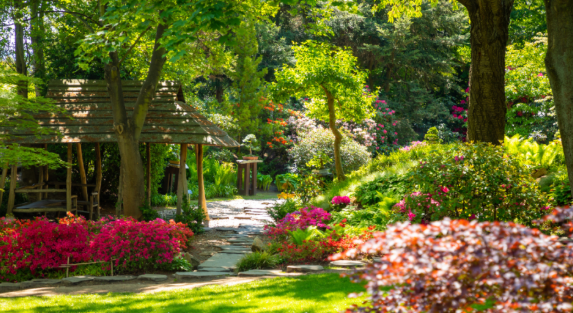

 .
.